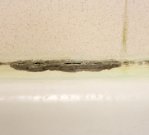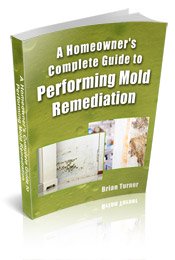Find a Mold Specialist Now
Click or Call, Toll-Free 24/7
Types of Mold in Homes

There are many different types of mold sometimes found in people’s homes. Different mold types have different looks and cause different health problems, but none are good for your health and all can be unsightly and cause an unpleasant, musty smell. Different kinds of mold grow in different places, too, and present somewhat different challenges for ridding your home of them. And make no mistake – it’s crucial to rid your home of any mold because all types pose specific health risks.
Alternaria
Alternaria grows in damp spaces, like showers and under sinks with leaky pipes. It sometimes grows in carpets that have been damp for a while, too. However, it can grow in areas with only minimal moisture. It can be found outdoors as well as indoors and spreads easily. It can cause allergy symptoms and the development of asthma. Elderly people, children, those with respiratory problems and those with immunosuppression (such as HIV + people or those undergoing chemotherapy) are at greater risk for health problems from alternaria.
Cladosporium
Cladosporium grows on both wooden surfaces and fabrics, like carpeting. It can also be found outdoors, where it mainly grows on plant material. It typically enters the house through HVAC systems or simply through open windows or doorways. Cladosporium can cause problems with your skin and nails as well as respiratory problems. It can lead to all the usual mold-related respiratory problems, though, like upper respiratory infections, allergic reactions, itchy eyes, coughing, sneezing and runny nose.
Penicillium
Penicillium is frequently found in things like insulation, carpeting, wallpaper and rotting fabrics (things like old mattresses, couch cushions, etc.). It’s known to spread rapidly and easily from one place to another. It’s one of the most common of all the different types of mold, and is actually the substance from which the antibiotic penicillin is made. Its medicinal use does not mean it’s harmless, though. Exposure to penicillium mold can lead to chronic sinus infections, allergy symptoms and an inflammation of the lungs.
Stachybotrys chartarum

Stachybotrys chartarum, sometimes referred to as “black mold” due to its slimy black appearance, typically grows in places with continuous moisture, like around a leaky pipe or in air conditioning ducts where there is a great deal of condensation. It can spread to other areas, though. Of all the different types of mold, stachybotrys chartarum may be associated with the most health problems.
Exposure can lead to chronic sinus infections, asthma attacks, allergy symptoms, depression and fatigue. The Centers for Disease Control and Prevention states that many claims of health problems caused by stachybotrys chartarum are unproven, yet many people believe the mold made them ill. It has a noticeable musty odor so it does seem likely you inhale some of the spores if you have the mold in your home.
Laboratory tests can determine which mold type you have in your house, but it may not really matter. Any type of mold that’s obvious to you needs to be removed. You may be able to remove small amounts of mold yourself, but we suggest you have a mold removal specialist assess the situation for you.
The Importance of a Professional Mold Inspection
Cleaning up mold is more than just scrubbing the surface, there are specific processes that need to be followed to be sure that all of the mold is removed. Most mold specialists offer a free consultation, and there are numerous advantages to these free services:
- A mold specialist will help you identify exactly what type(s) of mold you are dealing with, in order to determine the best clean-up techniques.
- They will be able to find and identify mold that is hidden, such as inside walls or under flooring.
- A specialist will help you understand each step involved in the cleanup process.
- The initial visit from a mold specialist is free of charge, so even if you decide to do the cleanup yourself the information will be extremely useful.
Follow the link to schedule your Mold Removal Inspection, because the problem needs to be taken care of as soon as possible.
Additional Reading:
Pink Mold - Information about pink colored mold, including health concerns and removal.
White Mold - White colored mold blends in easily and can be hard to spot. Learn about the health effects of white mold, and how to safely remove it.
Green Mold - Information and pictures of green household mold. How to know if you have stachybotrys mold.
Deadly Mold - Although mold identification is very important, there are many types of molds that are toxic. Learn about dangerous molds, toxic mold related illness, and how to recognize stachybotrys mold (often referred to as black mold).
Return From Types Of Mold To Our Black Mold Health Symptoms Home Page





